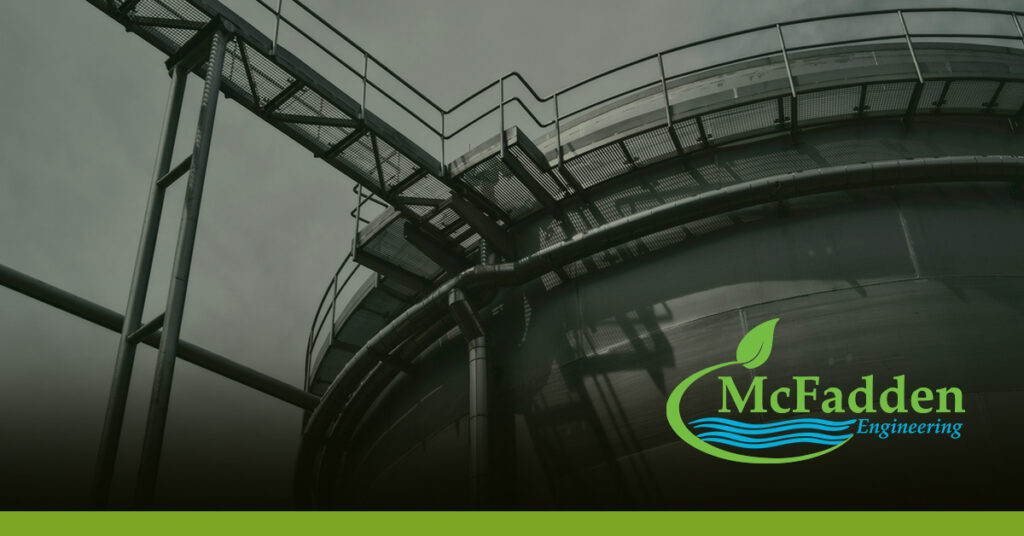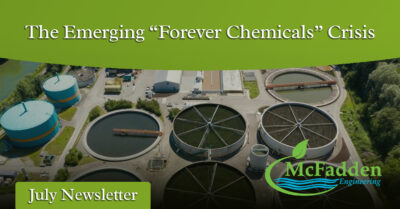Building & Maintaining a Pump & Treat Groundwater Remediation System Using Ozone Treatment Technology
February 16, 2022

Groundwater pump-and-treat remediation systems are a valuable, proven technology, especially on the Gulf Coast where we have abundant rainfall, high groundwater, and relatively high groundwater storativity and transmissibility. On the correct site, and with the proper chemicals of concern, they can cost-effectively remove and destroy many groundwater contaminants. Pump-and-treat systems are scalable and can be sized to treat large or small contaminant plumes. Additionally, properly designed systems allow relatively easy equipment upgrades, increasing or decreasing the size of a pump-and-treat system to make the system more flexible, economical to run, or to increase or decrease the size of the area treated.
Pump-and-treat systems that use ozone to treat contaminants are particularly attractive, as ozone readily destroys nearly all contaminants that can easily be oxidized. Ozone can be manufactured on-site in a cost-effective manner and does not require storage to be implemented.
Ozone treatment systems do, however, require specialized design parameters and maintenance. These design and maintenance parameters are not difficult or expensive, but they cannot be ignored. Addressing these items during the design process, along with providing proper system maintenance, increases effectiveness, decreases costs, and keeps system downtime to a minimum, while maximizing treatment efficiencies. Many things need to be assessed to make a pump-and-treat system as cost-effective and efficient as possible. Some of the more important areas to consider are as follows:
Site Suitability
While pump-and-treat systems work well at many sites particularly along the Gulf Coast, they are not appropriate for all sites. Each site must be evaluated for suitability. The site subsurface should be evaluated by an engineer or geologist to determine whether a pump-and-treat system is appropriate. Soil conditions, aquifer withdrawal rates, and the area of influence of potential groundwater extraction locations all play a role in determining if a site is suitable for pump-and-treat technology.
Design
Once the site has been evaluated and determined to be suitable, the design process can begin. The pump-and-treat equipment should be designed according to the conditions unique to the particular site to capture and treat the contaminant plume. Adequate redundancy in the system design is necessary to cope with equipment breakdowns. The equipment should be designed according to site conditions and sized to treat the groundwater plume with the proper controls needed to maximize the system operation. Implementing adaptability and providing the necessary control functionality is vital. Having an experienced team of engineers and geologists is essential to the success of this process.
Furthermore, the choice of materials used in an ozone pump-and-treat system is paramount. Because ozone is a strong oxidizer, the materials specified in the system that will encounter ozone must not be resistant to oxidation. Schedule 80 PVC, stainless steel, brass, ceramic, and Viton™ are the materials of choice for such an application.
Installation
Groundwater recovery wells, groundwater well pumps, plumbing, electrical, and the ozone treatment system itself must be installed before the actual pump-and-treat process can begin. The equipment should be properly installed by licensed contractors who have the experience, training, and know how to perform the installation. Installing tracer wire with subsurface utilities will make future line location and servicing easier. Ease of access, reducing environmental impacts, security, site preparation, and installation of utilities should be considered during the design and layout of these types of systems. Disposal of treated discharge water needs to be properly permitted and addressed.
Maintenance
Proper maintenance of a system is the difference between a system that “works” and a system that performs optimally. Most pump-and-treat systems are designed to run continuously. The use of logs to detail maintenance types and schedules are vital to minimize costs and down time. These logs can be used to track completed maintenance activities, critical spare parts inventory, and life-cycle trends with equipment. These logs also allow your team to schedule preventative maintenance activities.
Ozone reacts and degrades many common materials. Material selection and maintenance is critically important to keeping ozone treatment system components running without interruption. Prior experience has taught us that schedule 80 PVC, stainless steel and brass components, ceramics, and Viton™ rubber gaskets, O-rings, and seals are materials of choice.
Controls
Wireless remote access allows the system to be monitored and adjusted without requiring personnel to be physically present at the site. This can save time and money and allows for electronic recordkeeping that details system run times, as well as system downtime. These controls also provide records that can be submitted to regulatory agencies for compliance purposes and to document system performance.
Expandability & Optimization
A pump-and-treat system should be designed in a manner that will allow for easy expansion. The ability to expand a system or focus groundwater treatment by withdrawing groundwater from specific areas can make a system more efficient and cost-effective. Based on data collected during the operation of the system and the changing size and concentrations in the groundwater plume, a properly designed system will allow for the user to easily increase and decrease extraction rates in specific areas of the system. This functionality allows the system to be easily optimized and treatment efficiencies increased.
McFadden Engineering has years of experience working with different site remediation systems in many different industries and applications. Our expertise in this arena is first class and we would love an opportunity to provide these services to your next project.
Authors: Bill Gardner & Marshall Eschete, P.G.
